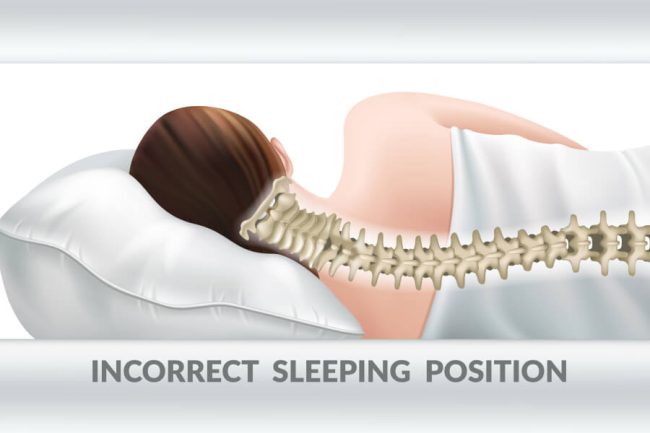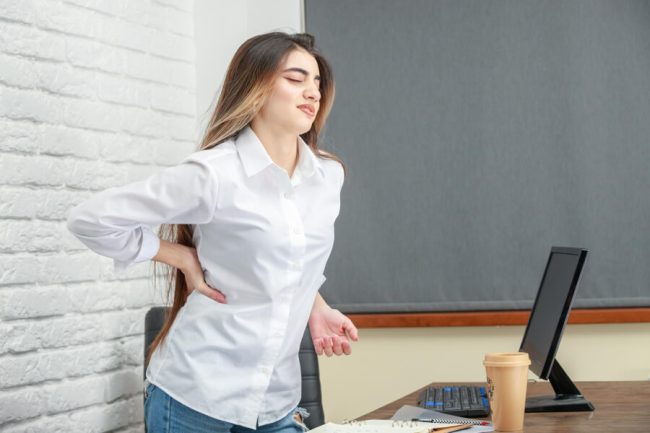Your Lumbar consists of 5 bones (vertebra), your vertebra consists from L1 to L5, in your lower back. So whether you feel hurt or pain, we will let you know 5 things to avoid doing for your lumbar spine health.
In 2020, low back pain (LBP) affected approximately 619 million people globally. This number is expected to rise to 843 million by 2050 due to population. “According to WHO”
What do Lumbar Spine do for you?
- It helps to distribute your body weight, supporting your upper body.
- The muscles of your lower back of your lumbar spine allow your trunk to move in all directions in a flexible way.
- Helps to protect your cauda equina and spinal cord.
- The nerves that branch off of your lower spinal cord and cauda equina control your leg sensations and movement.
5 Things to avoid for your Lumbar Spine Health
Impact of Sitting for a Long time
Many of us spend a long amount of time sitting, whether at a desk, in a car, or on the couch and forget about time leading to spending excessive time sitting which yet affects your lumbar spine.
When you sit for extended periods, the pressure on your lumbar discs increases, which can lead you to discomfort and potential injury.
Sitting also often leads to a poor posture, such as slouching or leaning forward, which strains the muscles and ligaments in your lower back.
By time, this can contribute to chronic back pain and other lumbar issues.
What you can do instead:
- Take Regular Breaks: Stand up and stretch every 30 minutes.
- Use a Supportive Chair: Ensure your chair supports your lower back and promotes good posture.
- Consider a Standing Desk: Alternating between sitting and standing can reduce the pressure on your lumbar spine.
Avoid Incorrect Lifting Techniques
Lifting heavy objects incorrectly is a common cause of lumbar injuries.
Whether you’re lifting weights at the gym or picking up something at home, using the right technique is important especially for older people to avoid back strain.
Common Mistakes:
- Bending at the Waist: This puts unnecessary pressure on your lower back.
- Twisting While Lifting: This can lead to spinal injuries.
Correct Lifting Techniques:
- Bend Your Knees: Lower your body by bending your knees, not your back.
- Keep the Object Close to Your Body: This helps maintain balance and reduces strain on your spine.
- Use Your Legs: Engage your leg muscles to lift the object, rather than relying on your back.
Don’t Ignore Your Posture
Good posture is more than just standing up straight; it’s about maintaining the natural curves of your spine, including the lumbar curve.
Poor posture, such as slumping or leaning forward, can lead to muscular imbalances and increased pressure on your lumbar spine.
Tips for Good Posture:
- Keep Your Shoulders Back: This helps maintain the natural alignment of your spine.
- Distribute Your Weight Evenly: When standing, try not to shift your weight onto one leg.
- Align Your Head with Your Spine: Avoid leaning your head forward, which can strain your neck and back.
Avoid High-Impact Exercises
While regular exercise is important for overall health, high-impact activities like running, jumping, or certain contact sports can exacerbate lumbar issues.
These activities can put excessive pressure on your lower back, especially if you have pre-existing conditions or weak core muscles you can follow these ones.
Low-Impact Alternatives:
- Swimming: Provides a full-body workout without putting stress on your joints and back.
- Walking: Gentle on the back and a good way to stay active.
- Yoga and Pilates: Focus on flexibility, strength, and posture, which are beneficial for lumbar health.
Avoid Overlooking the Importance of Core Strengthening
A strong core is essential for maintaining lumbar health, as it supports the spine and helps prevent injuries.
The core muscles include not only the abdominals but also the muscles in the back, pelvis, and hips.
Why Core Strengthening Matters:
- Improves Posture: A strong core helps maintain proper posture, reducing the strain on your lumbar spine.
- Reduces Back Pain: Strengthening the core can alleviate lower back pain by providing better support for the spine.
- Enhances Balance and Stability: A stable core helps prevent falls and other injuries.
Core Strengthening Exercises:
- Planks: Effective for building overall core strength.
- Bridges: Target the lower back, glutes, and hamstrings.
- Bird-Dog: A great exercise for improving balance and strengthening the core.
Conclusion
Taking care of your lumbar health involves more than just avoiding injuries; it’s about adopting a holistic approach that includes good posture, proper lifting techniques, and regular exercise.
By avoiding the habits mentioned above, you can significantly reduce your risk of lumbar issues and enjoy a more comfortable and active life.
FAQs
What makes lumbar pain worse?
Lumbar pain can be worsened by prolonged sitting, poor posture, improper lifting techniques, high-impact activities, and a lack of core strength. Avoiding these factors can help manage and reduce back pain.
What are the don’ts of low back pain?
Do not sit or stand for long periods without moving, avoid heavy lifting with poor form, refrain from slouching, avoid high-impact exercises if they cause discomfort, and don’t neglect core strengthening exercises.
What is the best exercise for lumbar pain?
Low-impact exercises like swimming, walking, yoga, and Pilates are generally recommended for individuals with lumbar pain. These activities help improve flexibility, strengthen the core, and reduce strain on the lower back.
Is walking good for the lumbar spine?
Yes, walking is a low-impact exercise that can be beneficial for the lumbar spine. It helps improve circulation, strengthen the muscles supporting the spine, and promote good posture.







